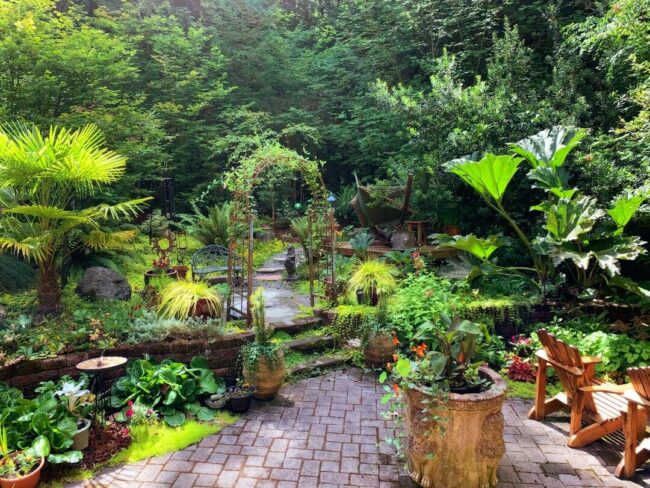
Transforming your outdoor space may feel overwhelming, but it doesn’t have to be. Whether you have a cozy balcony or a large backyard, there are endless possibilities to elevate your outdoor living areas.
With thoughtful planning and the right design elements, you can create a peaceful oasis for relaxation, entertaining, or enjoying nature. So, how can you make the most of your outdoor space?
Below are essential tips that will guide you in your transformation journey.
Understanding Your Outdoor Space
Before diving into design elements, it’s crucial to assess your outdoor area. Take time to understand its sun exposure, soil type, and drainage patterns. These factors will influence your plant selection and layout planning.
For instance, areas with full sun can accommodate a variety of flowering plants and vegetables. While shaded spots might require foliage plants or shade-tolerant ground covers. Additionally, observing how you use your outdoor space will help you determine the best features to include.
Effective Landscape Design Elements
When considering improvements for your outdoor space, a cohesive landscape design can make a striking difference. Here are some key elements to include:
Plant Selection
Choose plants that fit your climate and soil quality. Native plants are often the best choice. They require less maintenance and tend to attract local wildlife.
Layout Planning
Use outdoor space thoughtfully. Define areas for seating, gardening, and pathways to create a functional flow.
Hardscape Integration
Incorporate elements such as patios, walkways, and retaining walls. These not only enhance the aesthetic appeal but also provide functional spaces.
Choosing the Right Plants
Plant selection is one of the most crucial aspects of landscape design. Consider the following:
Seasonal Interest
Opt for a mix of perennials, annuals, and evergreen plants for year-round beauty. For example, tulips and daisies add spring and summer color while evergreens provide structure in winter.
Maintenance Needs
Evaluate how much time you’re willing to dedicate to garden care. Low-maintenance plants, such as sedums and ornamental grasses, are excellent choices if you prefer a more hands-off approach.
Climate Compatibility
Always research the plants suitable for your climate zone. Local garden centers often have resident experts who can guide you in choosing the best varieties.
Creating Functional Areas
Designate spaces for various activities to maximize usage of your outdoor space. This could entail creating separate zones for dining, lounging, or gardening. Here are some ideas:
Outdoor Dining Area
Create a dining zone with a table, chairs, and possibly a shade structure. This area can make meals more enjoyable and encourage outdoor entertaining.
Relaxation Nook
Create a cozy space with lounge chairs or hammocks where you can relax and enjoy the sunset or cool shade. Adding outdoor pillows makes it even more comfortable and stylish. A small table nearby can hold your favorite book or drink for the perfect peaceful retreat.
Vegetable or Herb Garden
Allocate a small patch for growing fresh herbs or vegetables. Raised beds or container gardens offer flexibility and can be planted based on available sunlight and heat.
Incorporating Water Features
Water features can enhance the tranquility of your outdoor space. A small pond, fountain, or birdbath can attract wildlife and provide soothing sounds. Consider:
Sound and Movement
The gentle trickle of a fountain or the ripples of a pond can mask background noise. It creates a more peaceful environment.
Wildlife Attraction
Water features can attract birds, butterflies, and beneficial insects. It enriches your garden’s ecosystem.
Lighting Your Outdoor Space
Outdoor lighting plays a vital role in extending the usability of your outdoor space into the evening. Here are some options:
Pathway Lights
Using solar-powered pathway lights can brighten walkways at night and make them safer to walk on. They also add a nice touch to your yard. This makes it look warm and inviting.
String Lights
String lights create a warm atmosphere for evening gatherings. Consider hanging them above seating areas or draped along fences.
Spotlights
Spotlights can highlight key features, such as trees or sculptures. It enhances the visual appeal of your landscape.
Hiring Professionals for Expert Landscaping Installation
If transforming your outdoor space feels overwhelming, hiring professionals might be beneficial. Their expertise can help you realize your vision while avoiding common pitfalls.
Expert landscaping installation can ensure that your design elements are executed correctly, from hardscape setup to plant selection. Working with professionals can save time and provide quality results.
Maintaining Your Outdoor Space
Once your outdoor space is set up, keeping it well-maintained is important to keep it looking beautiful. Regularly pulling out weeds helps plants stay healthy and neat. Trimming shrubs and trees encourages them to grow properly.
Watering should be adjusted based on the weather and the needs of your plants. It’s also important to clean up leaves and debris each season to keep the space fresh and ready for new plants.
Organizing Outdoor Storage
Keeping your outdoor space neat and tidy is crucial. Consider storage solutions to keep tools, cushions, and other items organized:
Storage Sheds
Storage sheds are great for keeping your tools, equipment, and outdoor furniture safe during bad weather. They also help keep your yard neat by giving you a place to store things when you’re not using them.
Storage Benches
Choose seating options that offer hidden storage beneath. This is ideal for keeping cushions dry and protected.
Sustainable Practices
As you design your outdoor space, consider incorporating sustainable practices whenever possible. Techniques such as xeriscaping not only conserve water but also support local wildlife. Additionally, composting organic waste can nourish your plants naturally and help reduce landfill waste.
Utilizing native plants and organic fertilizers can also enhance the health of your outdoor space. This minimizes environmental impact.
Personalizing Your Outdoor Space
Ultimately, your outdoor space should reflect your personality and style. Incorporate personal touches, such as:
- Art pieces, murals, or sculptures
- Unique plant containers
- Outdoor rugs
Elevate Your Outdoor Space
By following these essential tips, you can successfully transform your outdoor space into an inviting retreat tailored to your preferences. From understanding landscape design elements to choosing the right plants and ensuring expert landscaping installation, these insights will guide you in your journey.
Embrace the process and enjoy the results of your hard work. Create a space that you and your loved ones will cherish.
For more home improvement tips, check out our blog posts.
